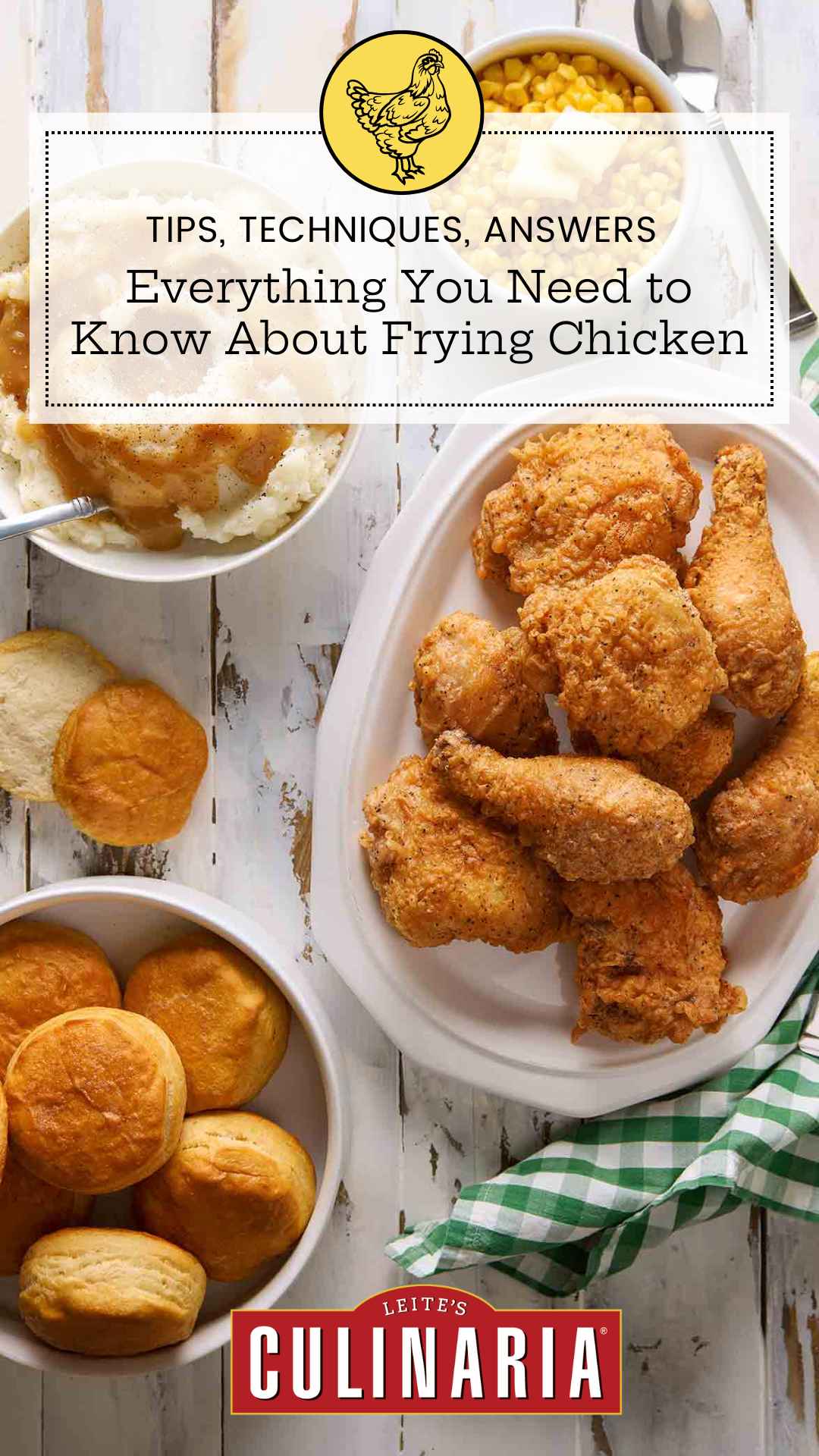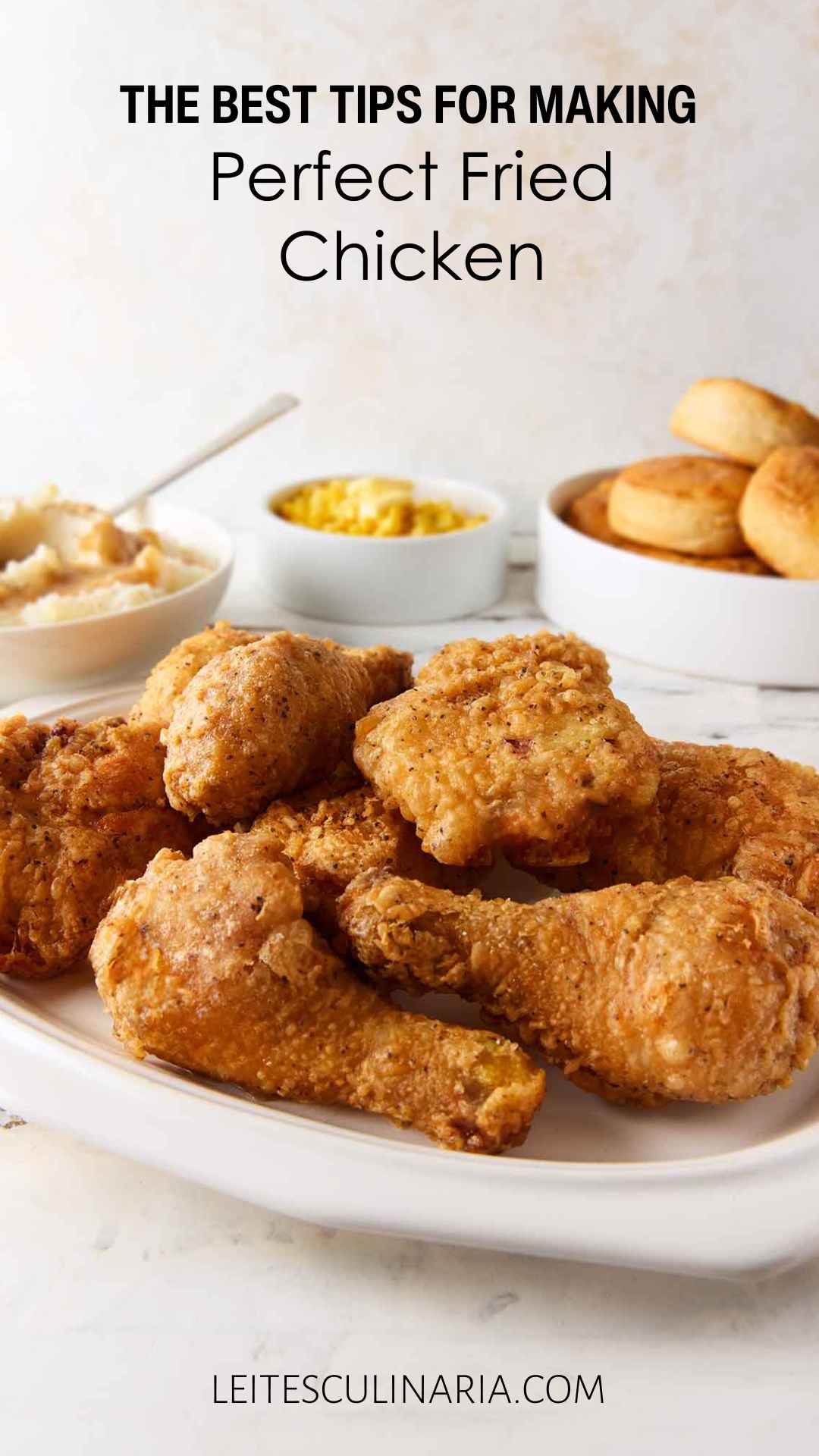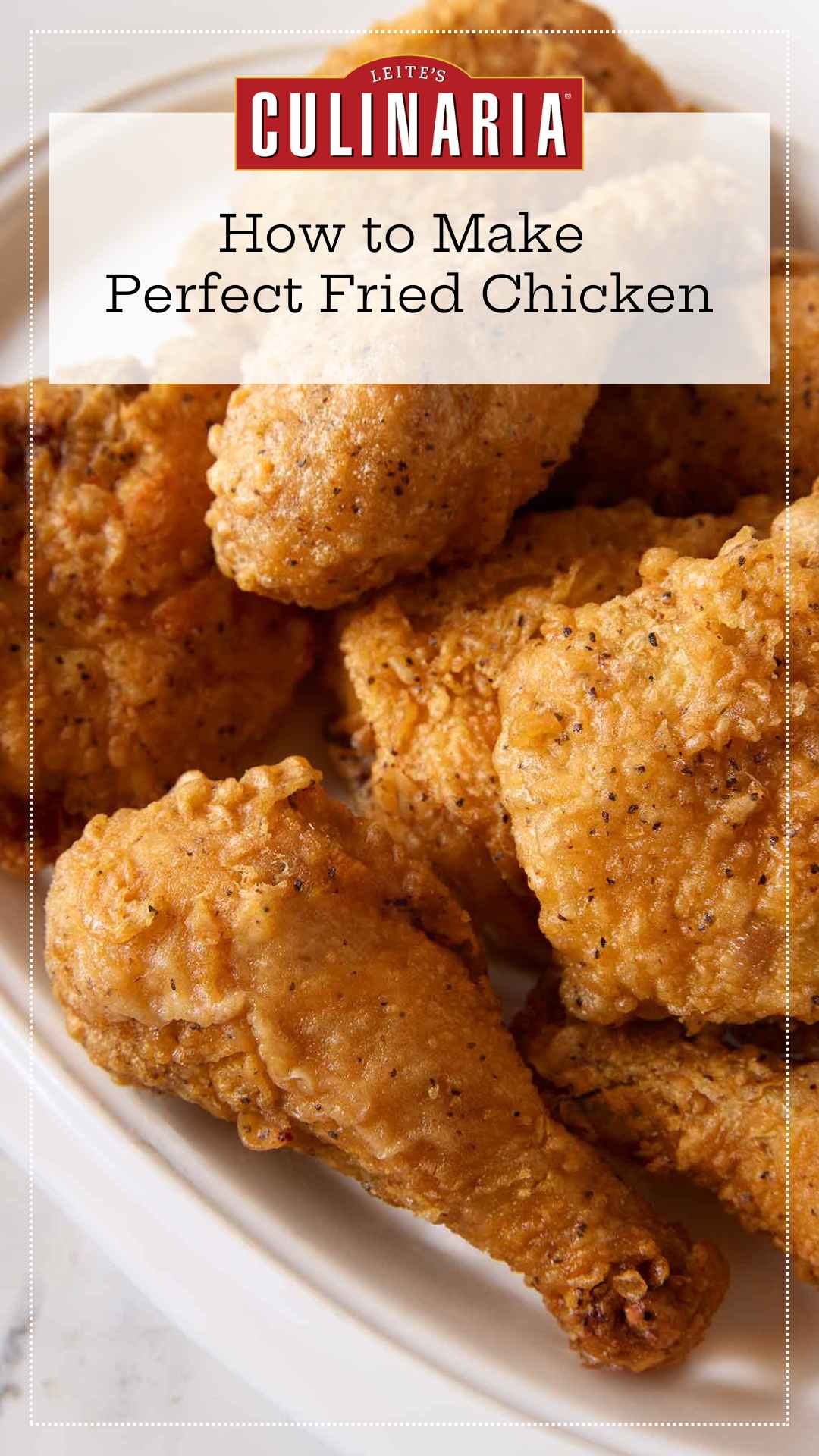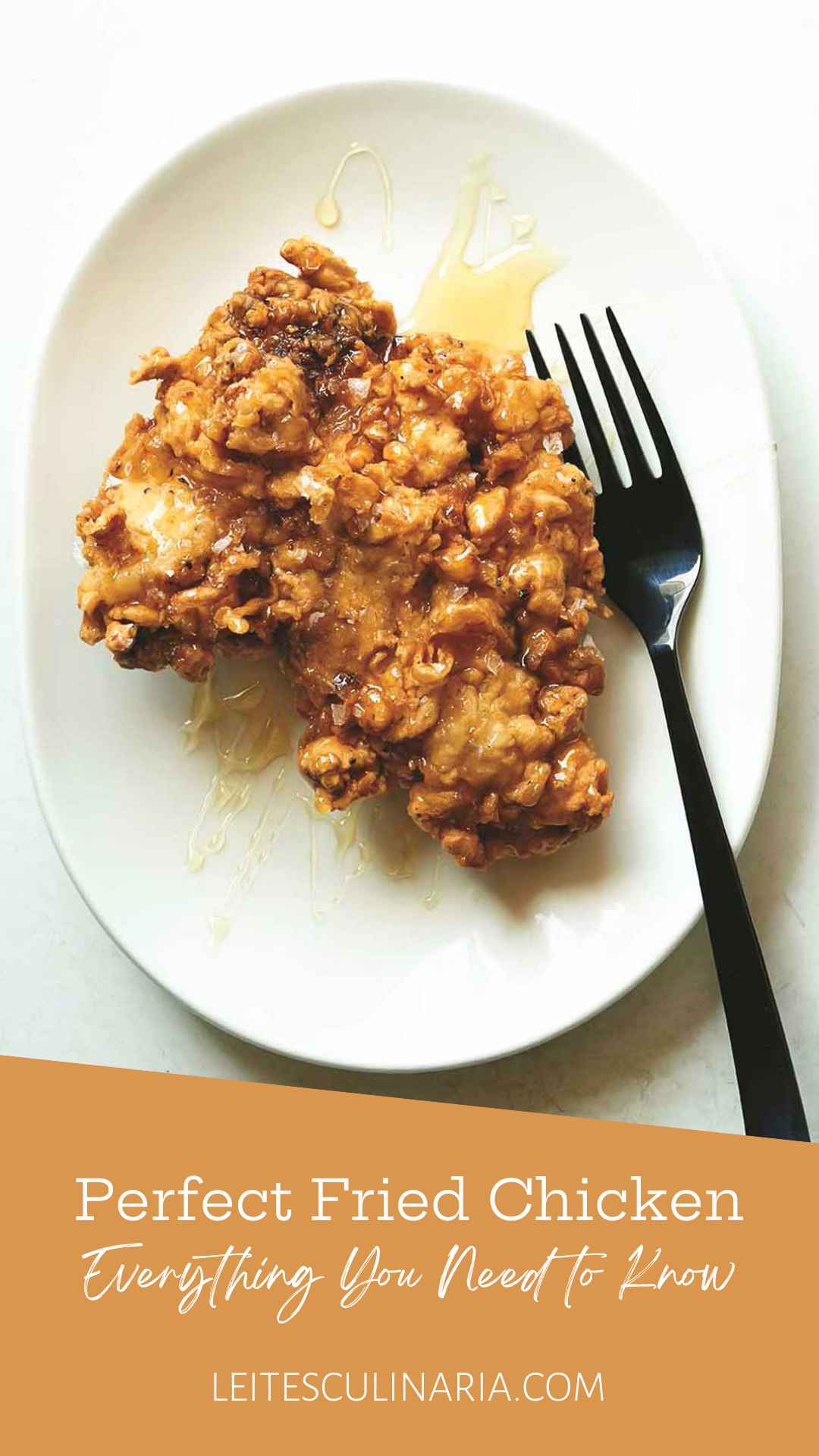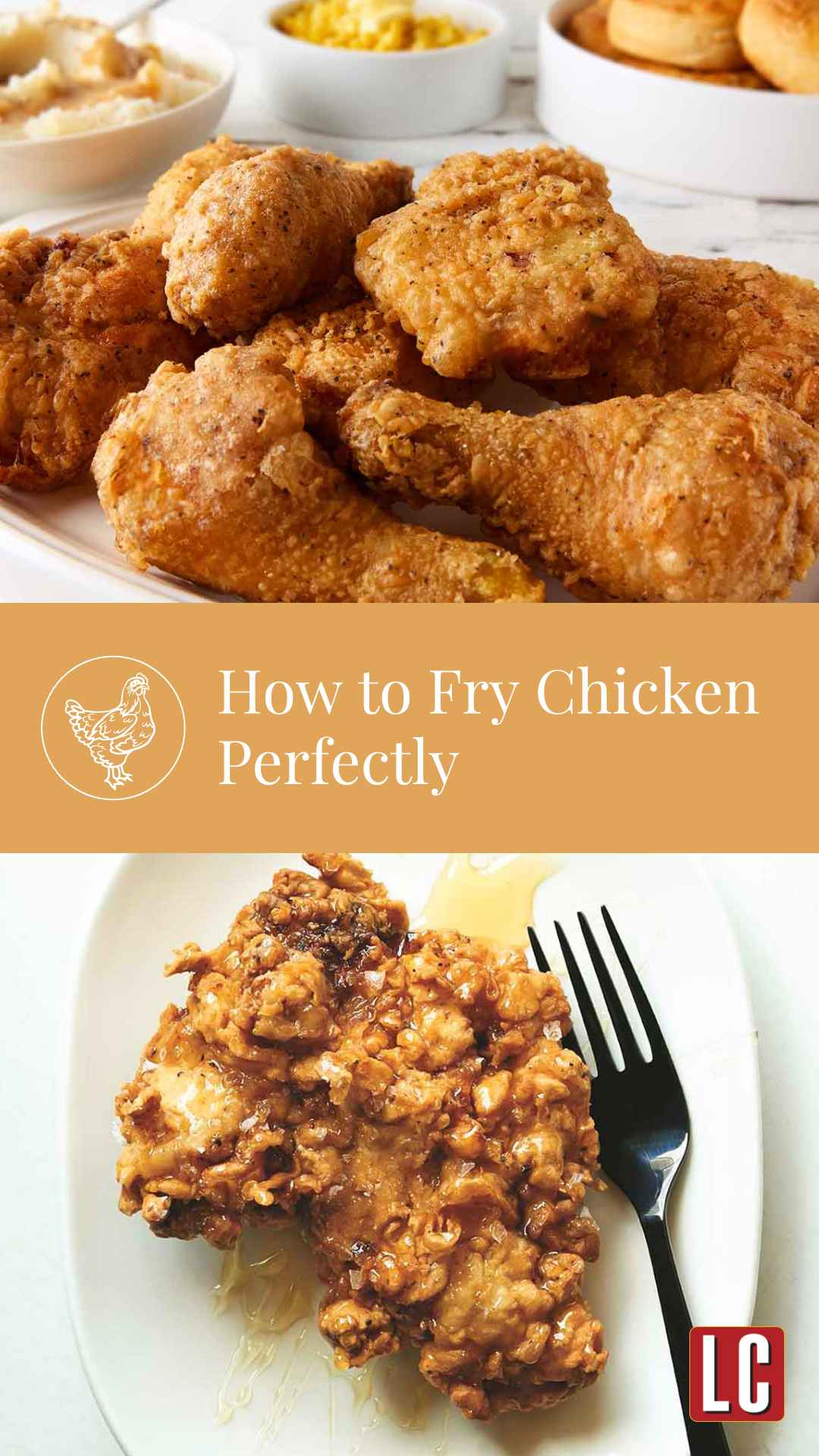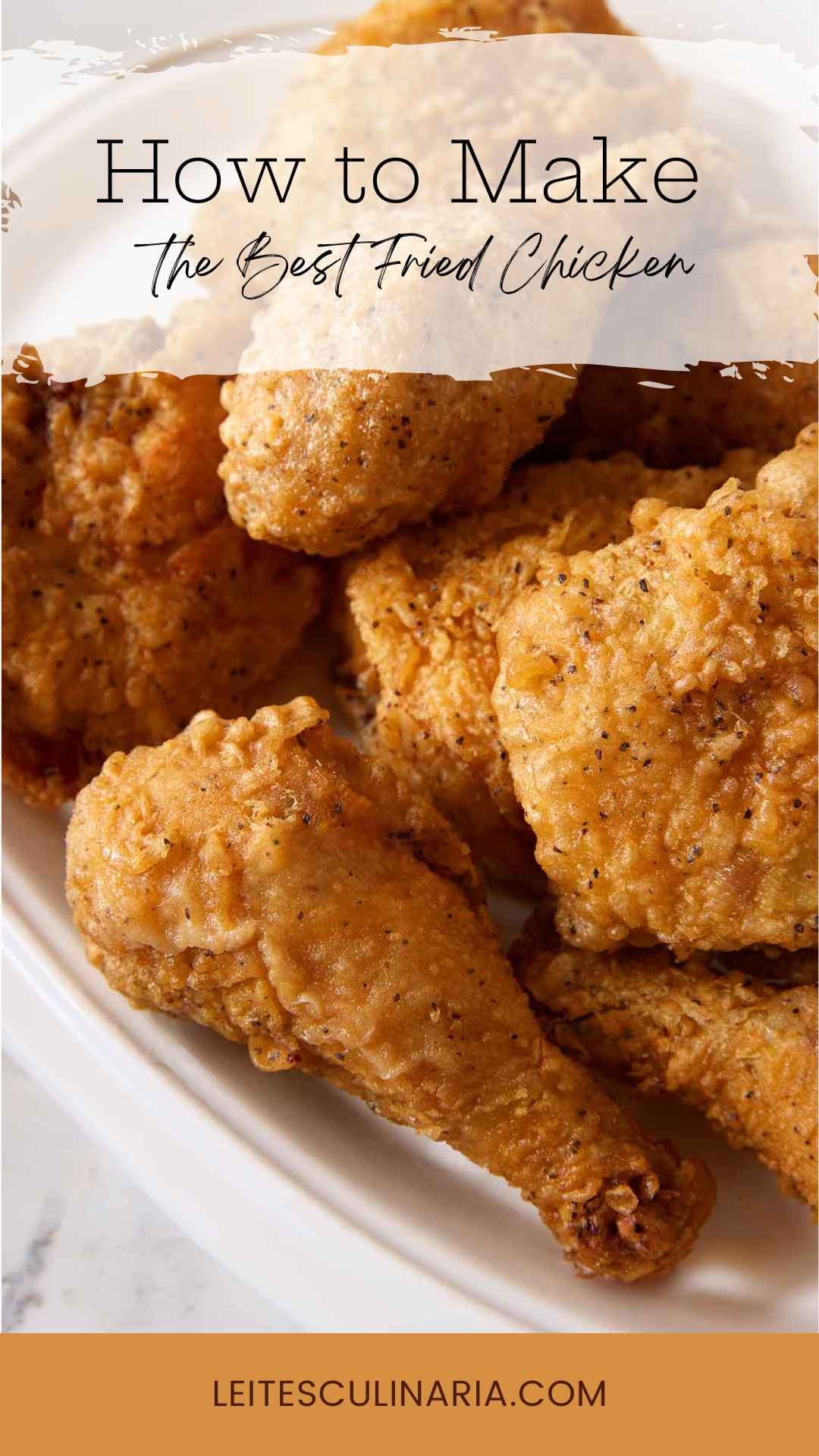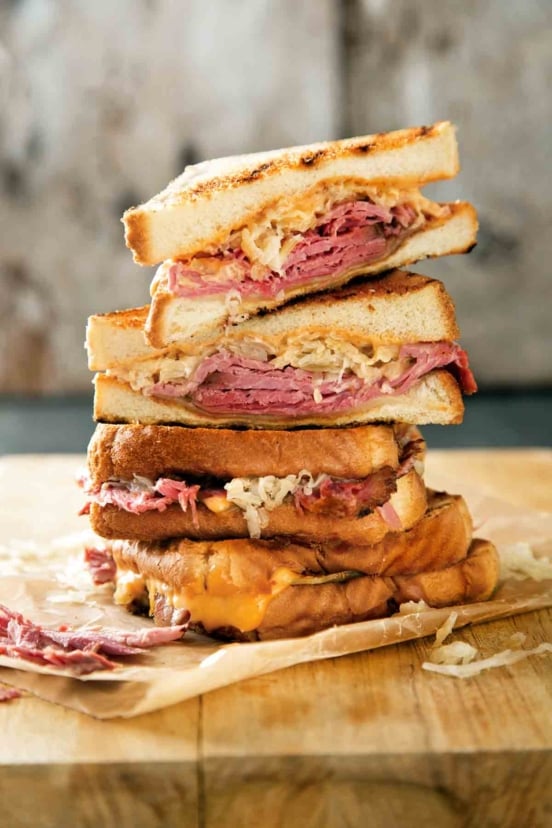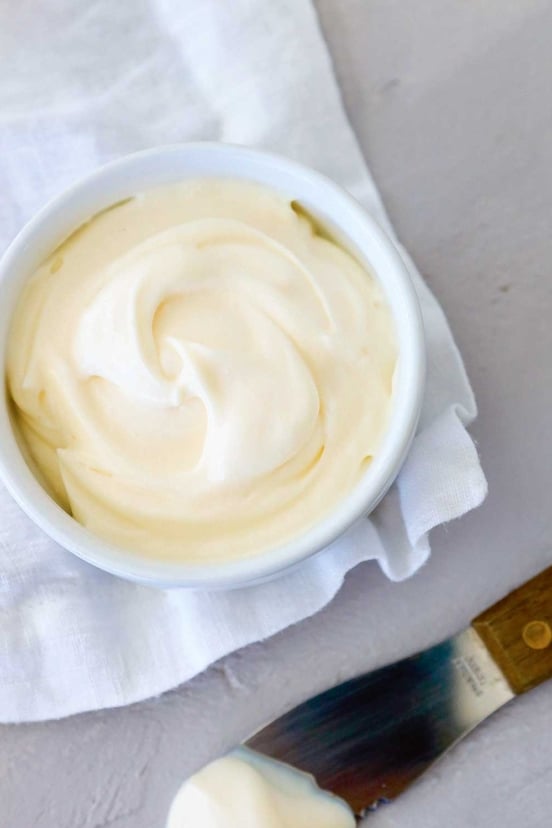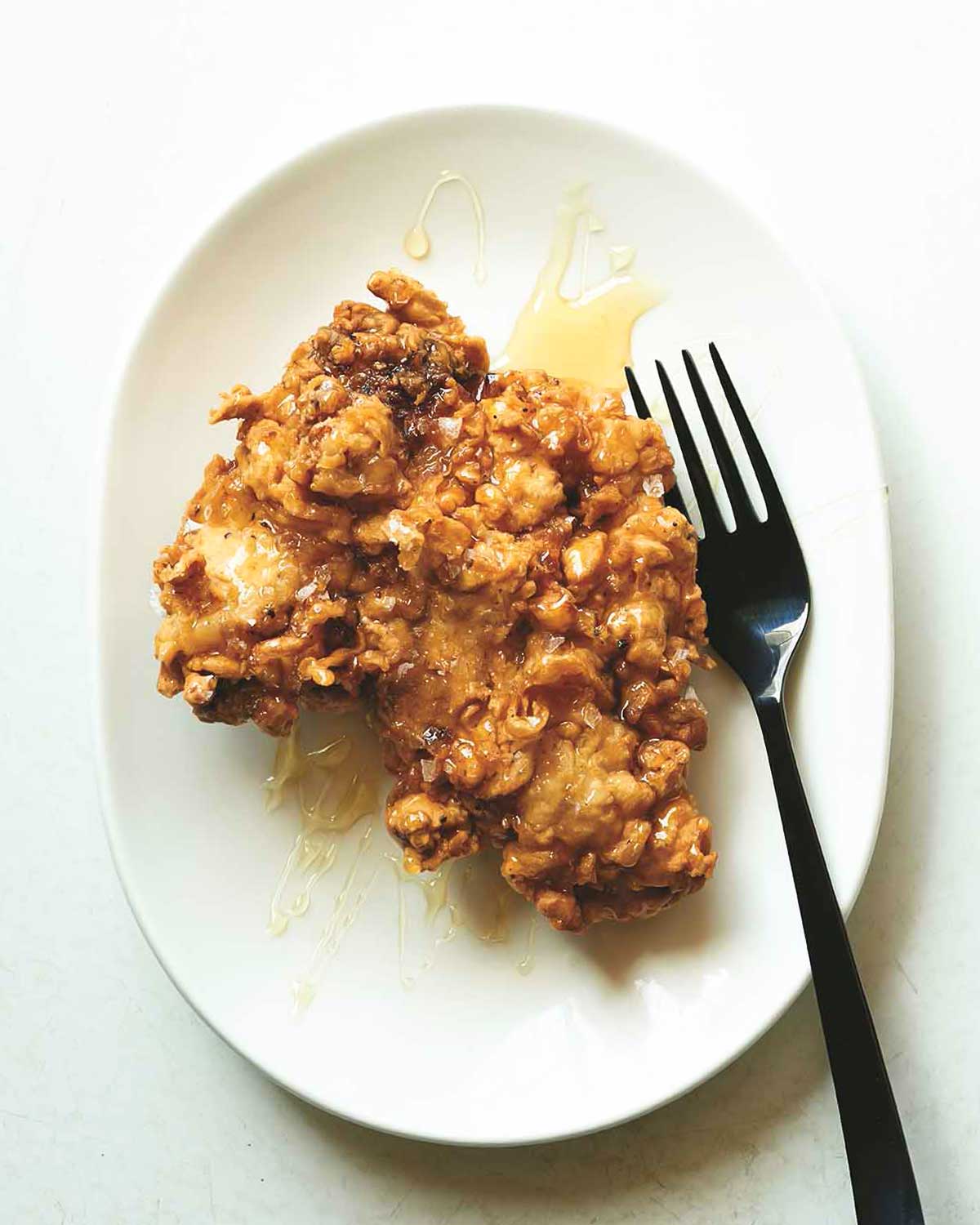
Boneless vs. bone-in
Once upon a time, this wasn’t even a question. Fried chicken was always bone-in. But, with the rise in popularity of fried chicken sandwiches, popcorn chicken, and chicken strips, boneless has become just as popular.
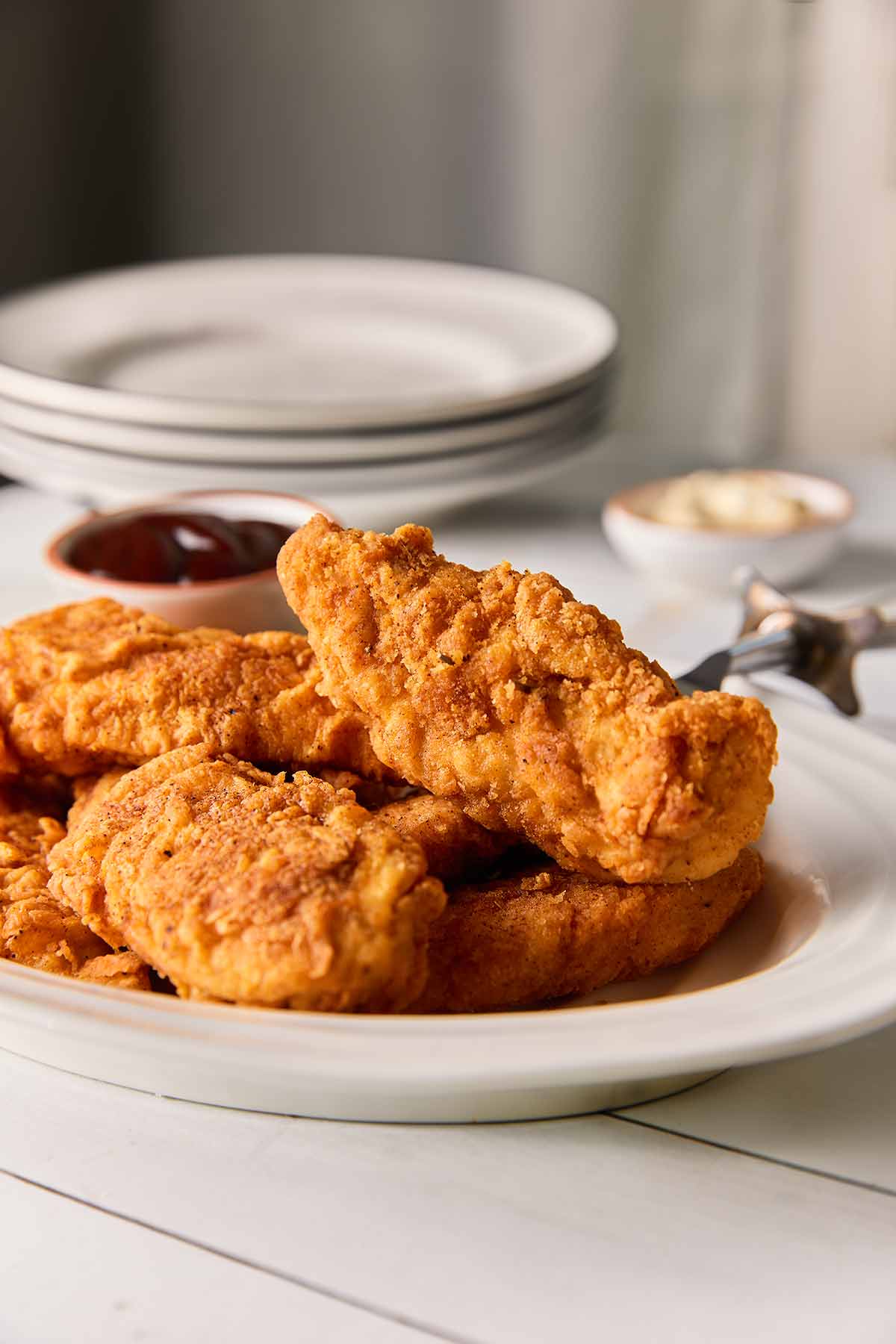
Sorry, but in my book, a classic fried chicken experience means bone-in. The bone acts as a heat conductor, helping the chicken to cook evenly and also helps the poultry to retain moisture during the frying process, resulting in tender and juicy meat.
That being said, if you’re craving a beer-battered fried chicken sandwich or need some homemade chicken strips to appease the kiddos at dinnertime, boneless is the way to go. Just be aware that boneless chicken will cook quicker than bone-in and is more susceptible to drying out. That’s why I often use dark meat for sandwiches and strips.
Should I brine my chicken before deep-frying?
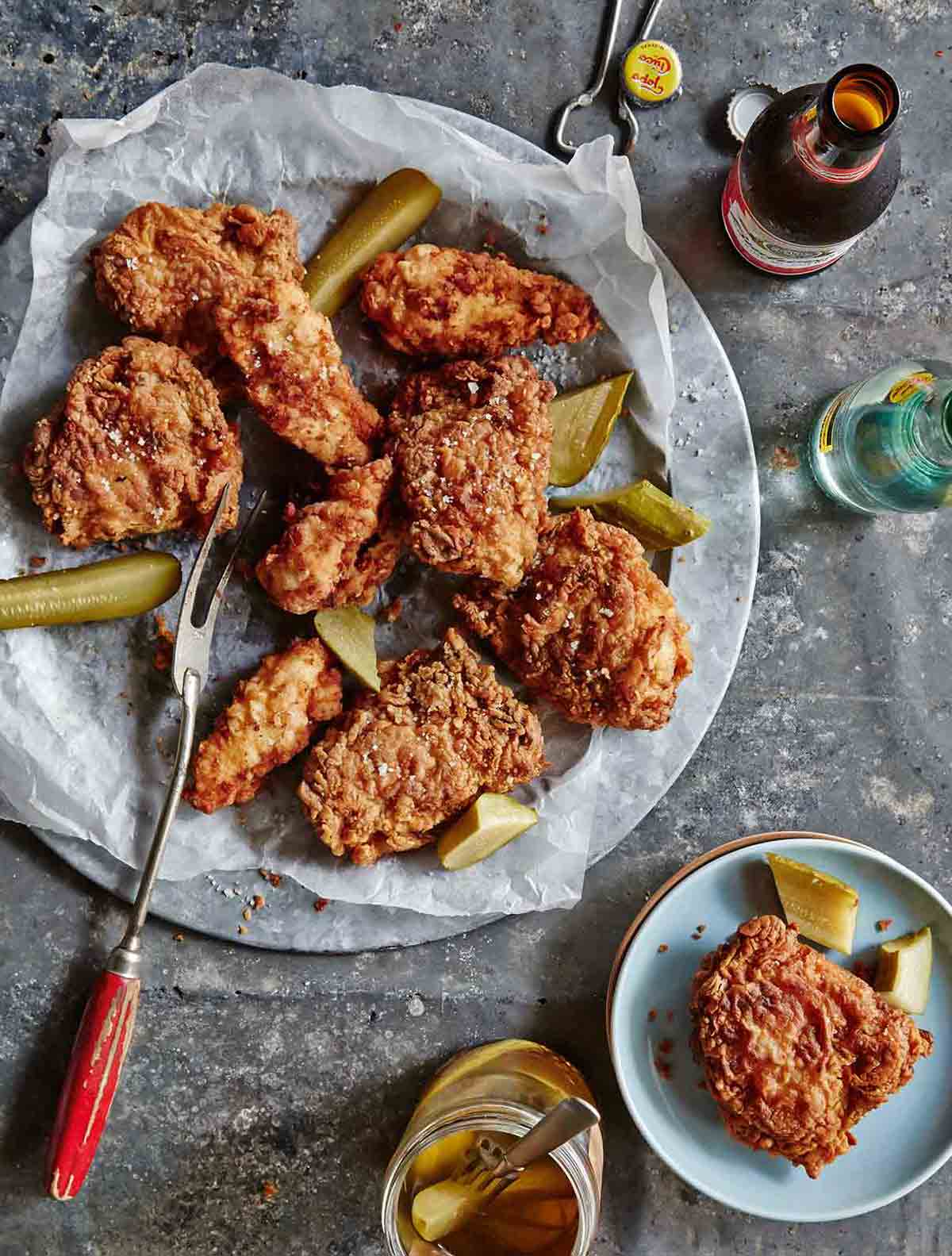
If you’ve got the time, then hell yes! Soaking your chicken in a salt-water solution for even a few hours before cooking will add flavor and help it retain moisture, keeping it juicy after frying. You can stick with a basic brine of salt, sugar, and water, but tossing in some herbs, spices, and even vegetables, as I do with my roast chicken, will give the chicken some extra oomph. And adding buttermilk will help to tenderize the meat.
Why does my breading fall off during frying?
Oof! The old complaint. There are a few things that can cause this. Not letting your chicken rest before frying is a big culprit. So is frying in oil that’s too cool. To avoid this, let your chicken rest for at least 15 minutes after breading before you frying. This will help the batter to stick and give you mouthfuls of crispy skin to enjoy.
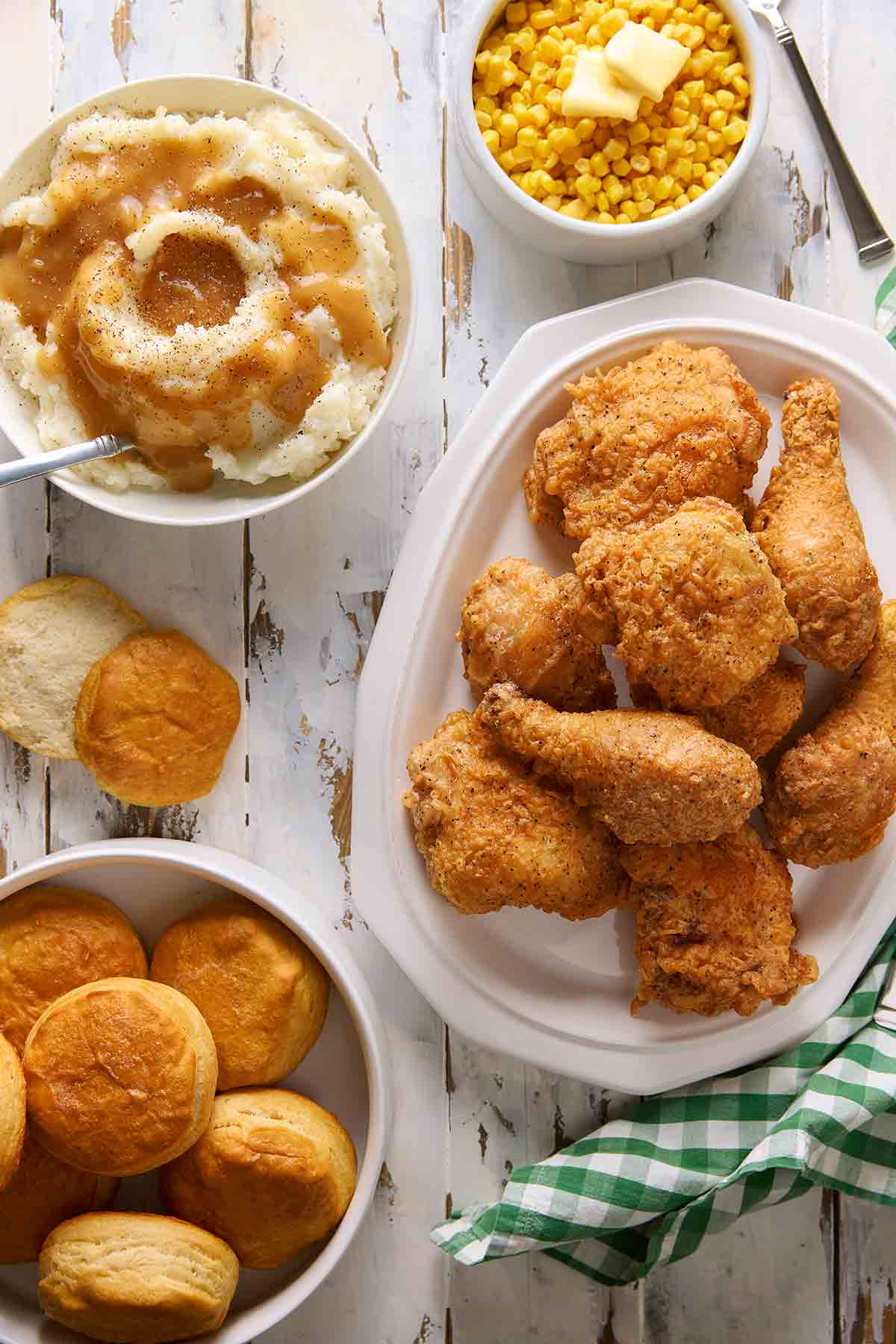
Oil temperature matters
If you remember nothing else, remember this. Oil temperature matters. A lot. If it’s too hot, the coating will burn before the chicken is cooked through. Too cold, and you’ll end up with greasy, flabby chicken, or you may end up having the coating throw up its hands in disgust and slide right off the chicken.
I recommend getting a deep-fry thermometer. (This is the one I use; it’s cheap and sturdy.) All you have to do is attach it to the side of your pot. Make sure the oil is at 375°F (190°C) or slightly above before adding the chicken. As you add the chicken to the oil, the temperature will drop. To avoid having it plummet way below 350°F (170°C)—the preferred frying temp—cook only a few pieces at a time, and always let it come back up to 375°F between batches.
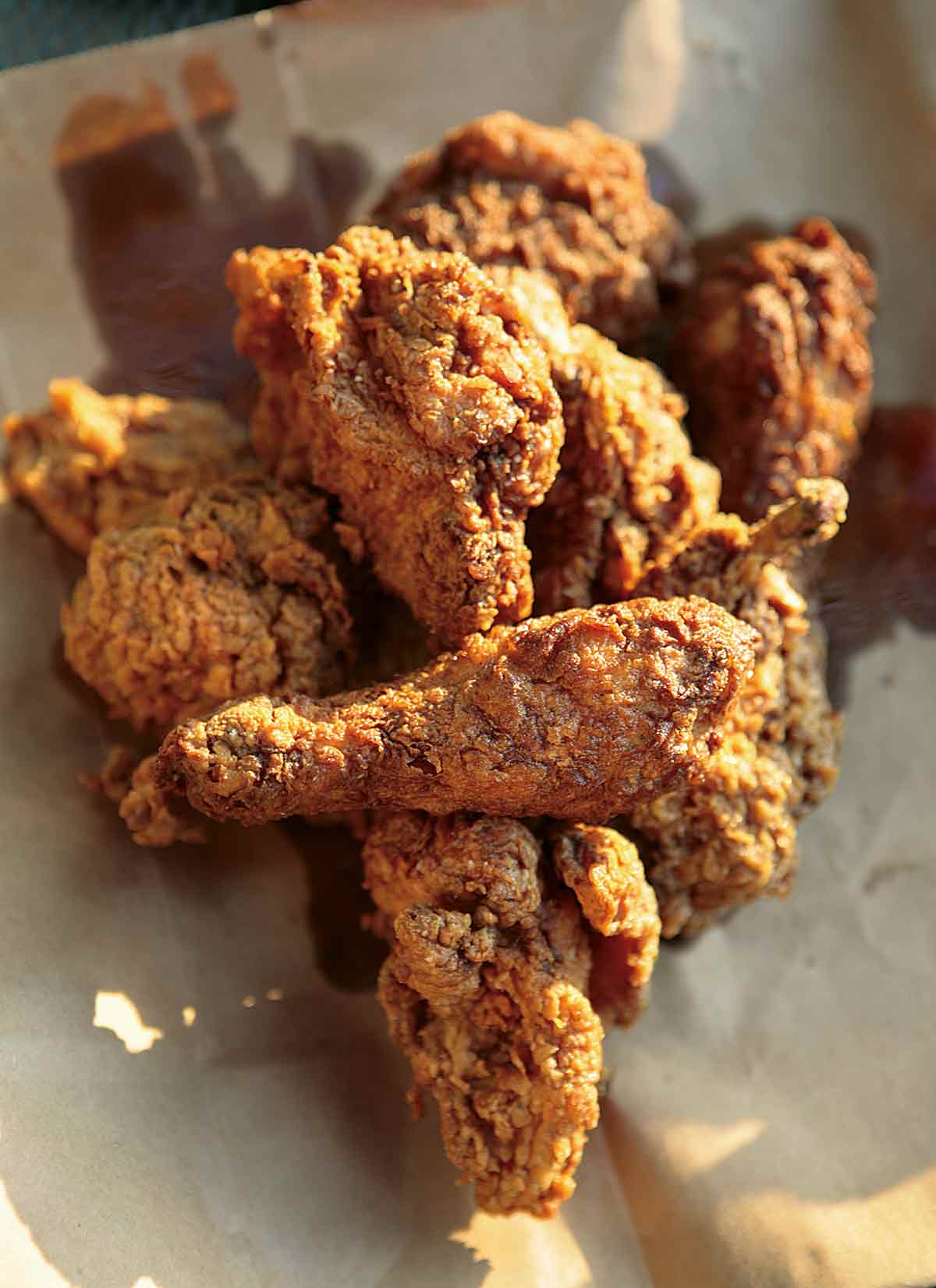
Don’t crowd the pot
Your chicken’s just like your teenager: It needs space. With plenty of room in that bubbling cauldron of oil, it’ll transform from pale and flabby to crispy and fabulous. Adding too many pieces at once won’t allow the chicken to crisp or cook evenly. The pieces shouldn’t be touching each other and should have some room to float around as they cook. Most large pots will accommodate about 4 pieces at a time.
Let it rest
That chicken is going to be SCREAMING hot when you (carefully) pull it from the oil. Unless you’re into third-degree burns on the roof of your mouth, don’t even think about taking a bite until it’s rested for at least 5 minutes. As the chicken begins to cool, the skin will crisp more, and the juices inside the meat will get redistributed, resulting in evenly juicy chicken.
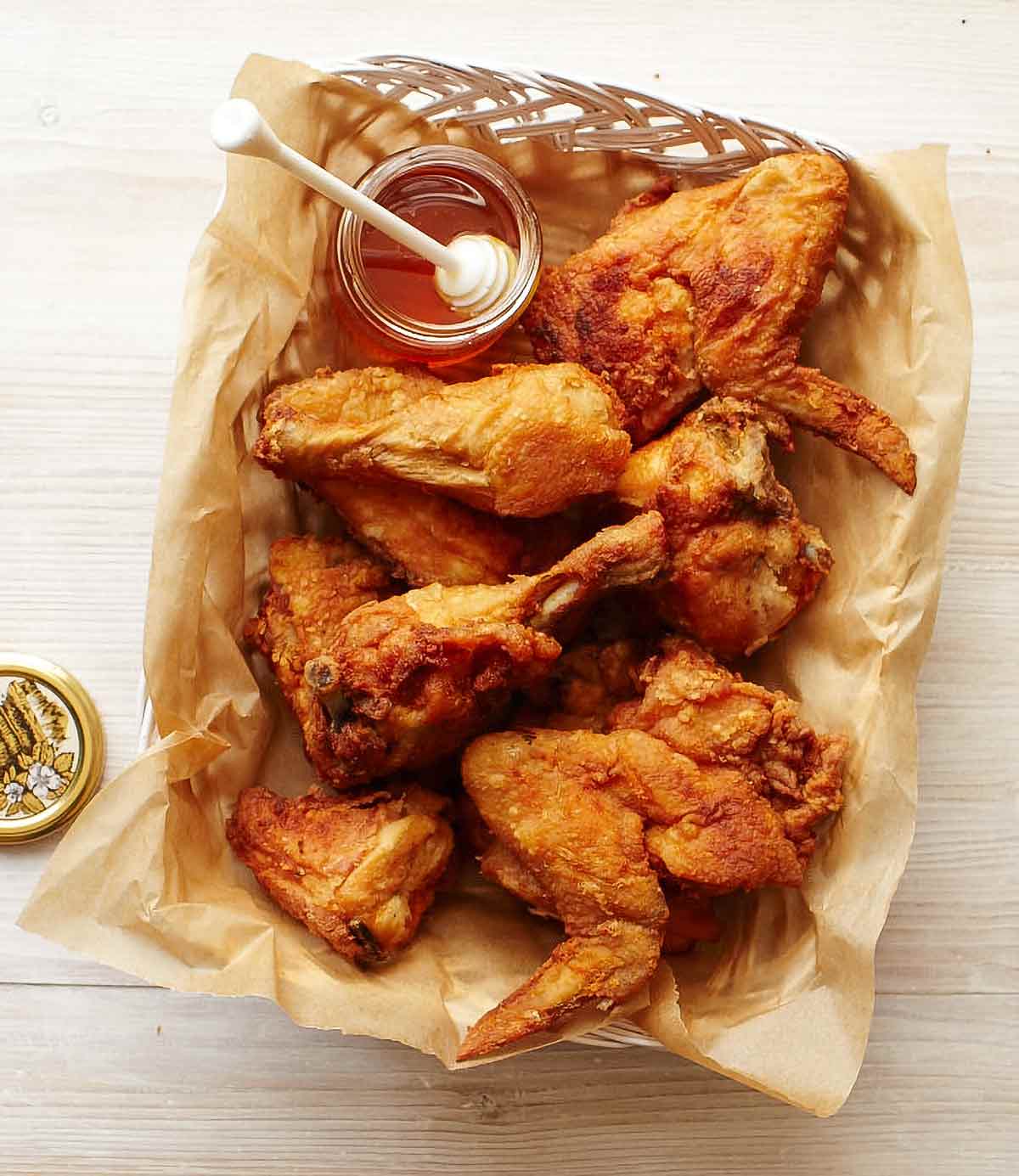
Ideally, you want to set the pieces on a wire rack over a few layers of paper towels or paper bags. The paper will catch any excess drips, and the rack allows air to move underneath the chicken, keeping the bottom just as crispy as the top. (Cuz no one likes soggy bottoms!)
Fried chicken side dishes
Now is not the time to be a model of self-restraint. Sure, there’s a time and place for that virtuous platter of steamed broccoli and a bowl of holier-than-thou kale salad, but this ain’t it. You already went the deep-fried route. You deserve some indulgent sides.
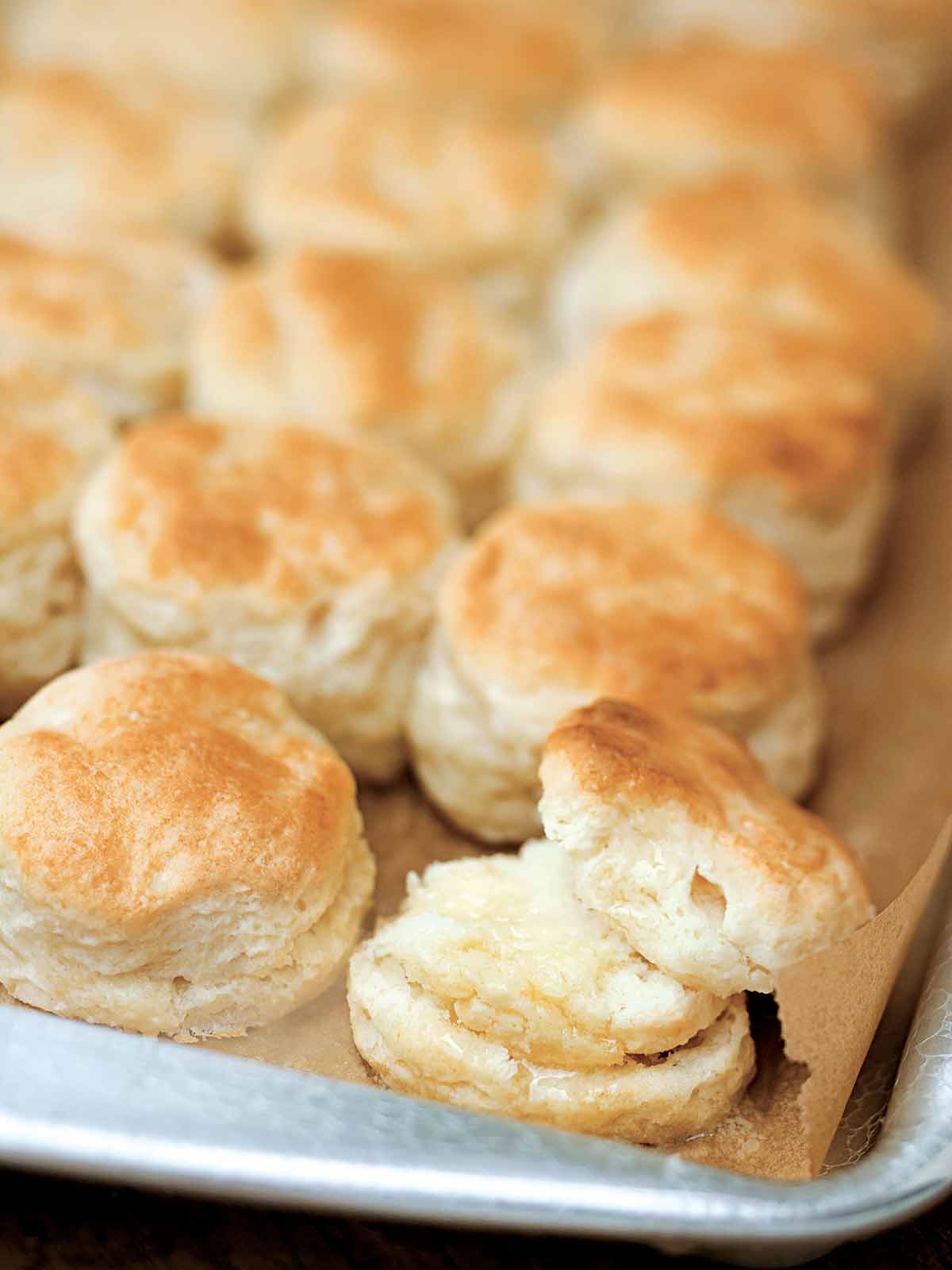
Whip up warm Southern buttermilk biscuits, creamy coleslaw, baked macaroni and cheese, or a big bowl of fluffy fork-mashed potatoes to go alongside your crispy fried chicken.
Storage
Cold fried chicken snitched directly from the fridge after midnight is every bit as good as hot chicken out of the fryer. (Yes, I’m speaking from experience; The One has the photos to prove it.) For the best snack, let your chicken cool completely before wrapping each piece individually in foil or plastic wrap.
If you prefer your chicken warm, ditch the microwave and reheat it in a 375°F (190°C) oven for 15 to 20 minutes. Although it’s unlikely to be an issue, be sure to devour that leftover chicken within 4 days.
Chow,

